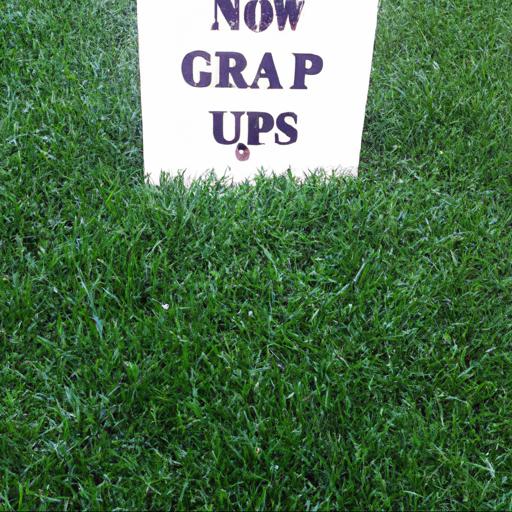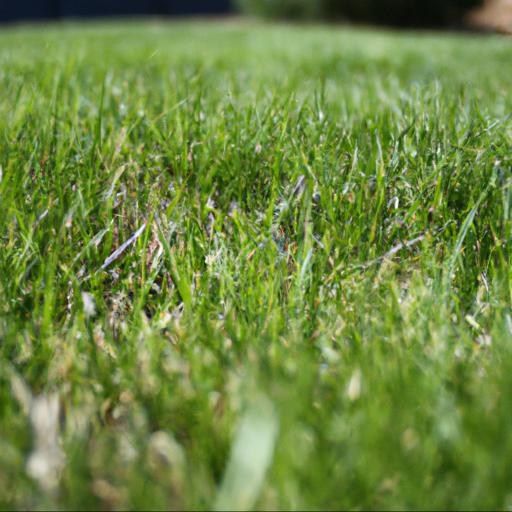Are you looking for ways to keep your lawn looking its best? Maintaining a beautiful lawn can seem like a daunting task, but with the right tips and tricks, you can have the greenest grass on the block. Here are seven lawn care tips to help you achieve your dream lawn.
From proper mowing and fertilizing to aeration and overseeding, these tips will help you keep your lawn looking its best all year round.
Tip #1: mow regularly

As a UK garden expert I am often asked for advice on how to keep a lawn looking its best. Mowing is one of the most important aspects of lawn care and, as such, it’s the perfect place to start if you’re looking for tips to keep your beautiful grass looking its best. Here are my seven top tips when it comes to mowing your lawn:Tip #1: Mow regularly.
Regular mowing is absolutely essential if you want to keep your lawn looking great. Your lawn may look unkempt or shaggy if you only mow every few weeks or months, so it’s a good idea to set a regular schedule for mowing.
Aim to mow at least once a week during the growing months, depending on weather conditions and the type of grass you have – more frequent mowing may be required during particularly hot or dry spells. Tip #2: Adjust your mower’s height. Most mowers will have the facility to adjust the blade height – look at the manufacturer’s instructions to find out how to do so.
Increasing the height of the blades will leave a bit more length on the grass stems and help to keep weeds in check. This can also help to keep your lawn looking good in cold winter months when grass growth slows down.
On the other hand, if you want to keep your lawn looking more formal, reducing the blade height can help to keep a neat and tidy appearance. Tip #3: Create patterns when mowing. If you’re looking for a way to keep your lawn looking interesting and attractive, why not try mowing in alternate directions each time you mow.
Varying the direction of the mowing pattern will help to prevent the build-up of compaction caused by regularly travelling over the same areas. This can help to prevent damage to the grass stems, as well as helping to keep the lawn looking great.
Tip #2: water properly

For a lush, healthy lawn, proper watering is a must. As a UK garden expert, I recommend that you keep your lawn hydrated by following these seven easy tips for optimal lawn care.
First off, determine how much water your grass needs, as this can vary depending on the type of grass and the climate of your region. While bluegrass and fescue require more copious amounts of water than Bermuda grass, areas in the south may need more frequent watering due to dry, hot weather. Second of all, water your lawn deeply and infrequently.
Most grasses benefit from a deep watering session every three to four days. This allows the water to penetrate the soil to a greater depth and encourage the grass to develop a stronger root system.
Third, try to avoid watering your grass when the sun is out. You should aim to water in the early morning or evening, when temperatures are cooler and the water will have time to properly settle into the soil. Fourth, water your lawn slowly.
Too much water at once can cause the soil to become water logged and create a breeding ground for disease and pests. Splashy water cycles should be avoided.
Fifth, when mowing your lawn, make sure to adjust your mower’s setting to a higher level to ensure there will be enough grass left on the blades of grass to shield them from the hot sun, reducing the amount of water required for the lawn. Sixth, use a rain nozzle sprayer, which is great for lawns with sloped areas as it provides gentler water pressure and more even coverage. Lastly, make sure you avoid overwatering your lawn, as this can lead to excess runoff, promoting turf diseases.
By following these seven lawn care tips, you can be sure to give your grass the proper hydration it needs to remain lush and healthy. With a bit of effort and patience, your lawn will be the envy of your neighborhood all summer long.
Tip #3: fertilize regularly

Having a beautiful, healthy lawn is every gardener’s dream and keeping it maintained is no easy task. To achieve a successful lawn care regimen, it is important to stay on top of the basics and be sure to fertilize regularly.
Fertilizing your lawn helps to promote healthy turf and encourages a thicker, greener lawn with fewer weeds. An effective fertilization schedule involves using a fertilizer with a balance of nitrogen, phosphorus, and potassium. These three components help improve the soil’s structure, promote strong root development, and encourage lush green grass.
Different types of fertilizers are available, so be sure to choose one that best fits the type of grass you have to ensure maximum benefit. When applying the fertilizer, spread it evenly in a back-and-forth motion and water thoroughly to help the nutrients absorb into the ground.
It is also important to avoid over-fertilizing, as this can cause an imbalance of nutrients in the soil, reducing your lawn’s potential for growth. In addition to following a consistent fertilization schedule, be sure to mow your lawn on a regular basis, water properly, and remove weeds from your yard. With these seven essential lawn care tips, you can be sure to have a healthy, green lawn all summer long!
Tip #4: aerate your lawn
Lawn care is an essential part of maintaining a healthy and beautiful garden. A crucial part of this is to ensure your lawn is aerated. Aeration helps your grass breathe, by creating small spaces in the soil that allow oxygen, water, and nutrients to penetrate the roots of the grass.
This will make your lawn grow thicker, reduce weeds and make it easier for your lawn to absorb nutrients. There are a variety of ways to aerate your lawn; the best way to do this is to use an aerator, either hand-powered or motorized.
A hand-powered aerator is a tool that you can use to manually push into the soil and punch small holes into the turf. This helps to reduce compaction, allowing for air and nutrient passage.
For motorized aerators, these work in the same way, but have an engine which ensures the holes are punched deeper into the soil. In addition to aerators, you can manually rake the turf with a gardenrake. This helps break up small areas of soil, allowing for better root growth, water infiltration and nutrient absorption.
If you notice that the thatch of your lawn is excessive, then it is best to loosen the soil with a core aerator or overseeder, as opposed to an aerator. These machines have knives that cut into the soil, pulling up cores of soil and exposing a large number of pores that air and nutrients can penetrate. Whether you choose to aerate your lawn with a manual tool or a mechanical device, it is important to make aeration a regular part of your lawn care routine.
This will ensure that your grass will remain healthy and grow in a vibrant manner. Try to carry out this task a few times during the growing season to ensure optimum health.
With these seven lawn care tips, you will be able to keep your garden looking lush and healthy in no time.
Tip #5: weed control
onlyWhen it comes to maintaining your lawn, one of the most important elements to consider is weed control. Seven lawn care tips that can help you do this and keep your garden looking its best include yearly soil tests, regular mowing, aerating, proper fertilization, removing weeds, overseeding, and mowing higher.
Performing a yearly soil test is essential for keeping your lawn healthy and free of weeds. Additionally, you can use the information from such tests to determine the best type of fertilizer to use on your lawn in determinate the optimal cut height for your grass. Regular mowing and aerating are also essential components of lawn care.
Not only will these practices help reduce weed growth, but they can also help improve water absorption. Mowing higher, with the blade set to a longer length, will help your grass become thicker and healthier – allowing it to crowd out weeds that may take hold. Overseeding, where you introduce a new grass variety to your lawn, is an effective way to avoid weed growth.
To do this, you need to select a grass seed specifically chosen to suit your specific climate and soil type. Fertilizing your lawn with a high-quality fertilizer is also a must.
Be sure to follow the instructions on the package, as over-fertilizing can result in the growth of fertilizer-loving weeds. Finally, a strategy for dealing with weeds that are already present is key to having a successful weed control program. You can either manually remove them from your lawn or use a herbicide to get rid of them.
Be sure to take appropriate safety precautions when dealing with herbicides, and choose one that’s suitable for the type of weeds you have. By following these seven lawn care tips, you can more effectively control weeds and enjoy a healthy and beautiful looking lawn.
Taking the time to give your lawn the care it needs is essential and will make all the difference to the overall appearance of your garden.
Tip #6: choose the right grass
As a UK garden expert, understanding the different types of grass used for lawn care is important in order to follow the seventh tip in lawn care: choose the right grass. This is crucial to create a beautiful, well-maintained lawn. Depending on the region, there are a variety of grass species that may be best suited.
This may include but is not limited to ryegrass, bent grass, and fescues. Ryegrass is best suited to mild climates, those found close to the sea.
This type of grass is fast growing and ideal in places where a quick turnover of grass is needed. It is also popular for golf courses, as well as bowling greens, where a dense turf is required for quick play.
Ryegrass has a fairly deep root system, however it does need regular mowing to prevent its leaves from overpowering. Bent grass is another type of grass found in more continental climates, away from the sea. It is slower growing than ryegrass, however it is much finer and denser, making it the ideal choice for creating a beautiful, plush-looking lawn.
It also needs less mowing than ryegrass due to its slower growth, so this type of grass is perfect for those looking for time savings. Fescues are another type of grass, ideal for regions with harsher temperatures and less rainfall.
It is best suited in areas that suffer from prolonged droughts. Fescues are also drought-resistant, making them an ideal choice for areas that stay dry, such as Mediterranean regions. However, fescues are more challenging to maintain than other grasses, so regular mowing and watering are essential.
By understanding the different types of grasses, gardeners can make an informed decision when choosing which type of grass is best suited for their particular climate and conditions. Choosing the right grass is essential in achieving a beautiful, well-maintained lawn, so it is important to take the time to do proper research before selecting.
Tip #7: use pest control
When it comes to sprucing up our lawns, proper care and maintenance are essential. One of the most important tips for lawn care is to use pest control. It’s frustrating when pesky insects and critters start to wreak havoc on our lawns, but with the proper pest control in place, we can make sure that our lawns look their best.
When trying to decide which type of pest control to use, it’s important to consider the type of pest problem that needs to be solved. Some pests, such as grubs, require grub control products, while other types of pests, such as mosquitoes and aphids, require different means of treatment.
Additionally, some treatments work better for certain types of lawns, like those with a mix of grasses, such as Kentucky blue grass and rye grass. Another important factor to consider when selecting a pest control product is the safety of the product.
Some lawn care products are not safe to be used around people and pets, so it’s important to read the labels to make sure that the product is safe to use. Additionally, it’s best to avoid using chemical treatments whenever possible and instead opt for natural pest control methods, such as planting beneficial insect-repelling plants. This not only helps keep pests away, but also prevents the release of harmful chemicals into the environment.
To make sure that your lawn stays as healthy and vibrant as possible, proper pest control is one of the most important of the seven lawn care tips. Finding the right pest control can take a bit of research, but it’s well worth it in the long run to properly maintain the aesthetic appeal of your lawn.
Final Touch
This article provides seven useful tips to help keep your lawn looking its best. These tips include mowing frequently, removing weeds, aerating the soil, fertilizing, watering properly, controlling pests, and overseeding. With these simple steps, you can keep your lawn healthy and attractive for years to come.
FAQ
What are the best practices for mowing a lawn?
The best practices for mowing a lawn include mowing in a different direction each time, keeping the blade sharp, mowing at the correct height, and removing clippings from the lawn. Additionally, it is important to avoid mowing when the grass is wet, as this can damage the grass.
How often should I water my lawn?
It depends on the type of grass, climate, and soil in your area, but generally, it is recommended to water your lawn 1-2 times per week.
What type of fertilizer should I use for my lawn?
The type of fertilizer you should use for your lawn depends on the type of grass you have and the current condition of your soil. A general-purpose fertilizer that is high in nitrogen is usually a good choice for most lawns.
How can I prevent weeds from growing in my lawn?
To prevent weeds from growing in your lawn, make sure to mow regularly, fertilize, aerate, and overseed your lawn. Additionally, use a pre-emergent herbicide to prevent weed seeds from germinating.
What is the best way to aerate my lawn?
The best way to aerate your lawn is to use a core aerator, which removes plugs of soil from the lawn to allow air, water, and nutrients to reach the grass roots.
How can I prevent lawn diseases?
To prevent lawn diseases, it is important to maintain a healthy lawn by mowing regularly, watering deeply and infrequently, and fertilizing appropriately. Additionally, it is important to remove any dead or diseased grass and debris from the lawn to reduce the spread of disease.
What is the best way to remove moss from my lawn?
The best way to remove moss from a lawn is to aerate the soil, apply a fertilizer specifically designed for moss control, and then rake the moss away.

